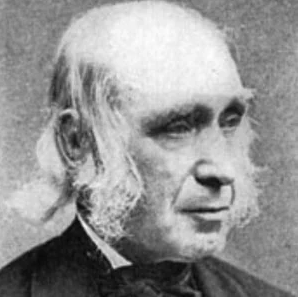Direct Quotations
Estimated Time: 15 minutes
At the end of the lesson, you will understand how and when use direct quotations in your writing.
How and Why Do I Use Quotations in My Writing?
First, why would I use a direct quotation instead of paraphrasing? When the exact language that a person uses shows the power or nuance of his point of view, you may want to use a direct quotation. You may also use direct quotations when you are citing a text to make an argument about the work itself or its author. Direct quotations can be powerful additions to your writing, but they should be used sparingly — only when they serve a specific purpose and not to fill space.
In the following video, you’ll learn the rules and structure for quoting sources in your writing. You will also learn how to use the APA referencing system, which is a citation method used by universities. It was developed by the American Psychological Association and it is a structured format you must follow when you report ideas from other sources in your writing.

Direct Quotations
By using direct quotations you transfer the exact words of the author in your writing without committing plagiarism. Let’s look at an example :
Effective teams can be difficult to describe because “high performance along one domain does not translate to high performance along with another” (Ervin et al., 2018, p. 470).
Notice that the phrase appears within quotation marks. Adding quotation marks is a necessary step when using direct quotations. The second point is that the phrase within the quotation marks does not start with a capital letter because the writer of the essay only quoted part of the sentence in the original text.
It is not enough to directly quote a text without citing your sources. The citation always appears after the quotation, as you can see in this example. You can find the presentation from the video here.
Summarizing the Rules
You can directly quote up to 40 words in one quotation. Make sure you don’t overuse direct quotations. Your essay should include only up to two short direct quotations, appearing in separate paragraphs. It takes skill and a good understanding of the text to decide when a direct quotation is appropriate. Essays with a lot of direct quotations get lower scores as they don’t serve the purpose of academic writing, which is to demonstrate your knowledge and personal writing style.
- If you are quoting a whole sentence from a text, start with a capital letter and end with a full stop.
- If you are quoting part of a sentence start with a lowercase letter and don’t add a full stop in the end
- Your quoted text always appears within quotation marks. If you forget to add them your quotation will be considered plagiarism.
- Never forget to add the citation in brackets directly after the quotation
- Citations always have a standard order. You cannot reverse it or change it in any way
- Based on the APA format, the order of a citation appearing in the text is as follows: (Author’s surname + comma + year of publication +comma + book page).
- Based on the APA format, if you are quoting a text with more than one author, the citation appears in the text as follows: (Name of the first author + et al. + comma + year of publication).
- If you are quoting from an internet site without an author you follow this format: (+ website URL+).
- If the text you are quoting is not part of a book with numbered pages the format you follow is (Author’s surname + comma + year)
Let’s look at some examples:
- Discrimination against blacks appears in the form of “aversive racism” (Alport et al., 1956, p.37). Here you see an example of a direct quotation of a term that cannot be paraphrased as it is a scientific term in sociology created by the author of the text.
- Vilani et al. believe that “Spirituality and religiosity have been found to be positive predictors of subjective well-being, even if results are not altogether consistent across studies.” (Vilani et al., 2019). This is a direct quotation involving a complete sentence. It starts with a capital letter and ends with a full stop. Notice that although the name of the author has already been mentioned at the beginning of the sentence, you still have to write it again when you cite your source. The quoted article has more than one author but Vilani appearing is the first name that appears in the original text. For this reason, only one surname is mentioned and the phrase et al. represents all other authors of the article. This saves space as many scientific articles can have up to 10 contributors.
- The university’s career advisors “foster partnerships with employers, alumni, faculty, staff, administrators, and the greater community” (https://new.paragoniu.edu.kh/current-students/student-services/). In this example, the quoted text comes from Paragon University’s website so the whole URL is copied and added.
Extras
Check Yourself
Complete the task below to check your understanding of today’s lesson.
Quiz Summary
0 of 1 Questions completed
Questions:
Information
You have already completed the quiz before. Hence you can not start it again.
Quiz is loading…
You must sign in or sign up to start the quiz.
You must first complete the following:
Results
Results
0 of 1 Questions answered correctly
Your time:
Time has elapsed
You have reached 0 of 0 point(s), (0)
Earned Point(s): 0 of 0, (0)
0 Essay(s) Pending (Possible Point(s): 0)
Categories
- Not categorized 0%
- 1
- Current
- Review
- Answered
- Correct
- Incorrect
-
Question 1 of 1
1. Question
Select all quotations with a correct citation.
CorrectIncorrect
